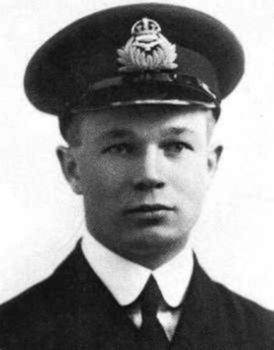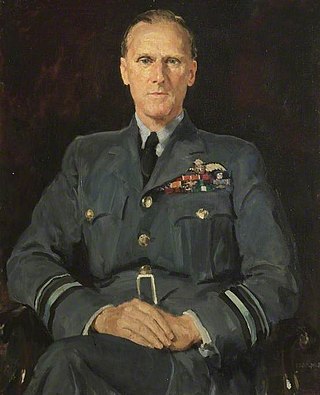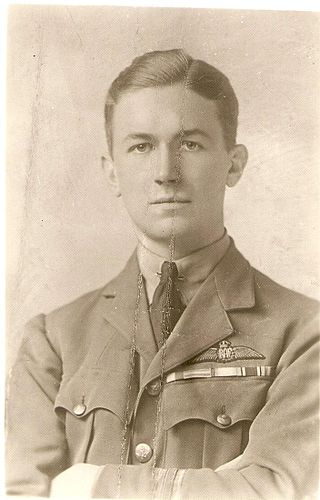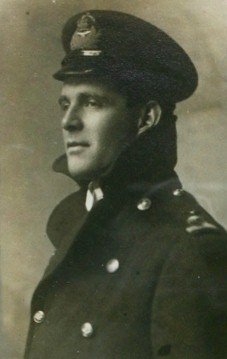Related Research Articles

Arthur Roy Brown, was a Canadian flying ace of the First World War, credited with ten aerial victories. The Royal Air Force officially credited Brown with shooting down Manfred von Richthofen, the "Red Baron", although historians, doctors, and ballistics experts consider it all but certain that Richthofen was actually killed by a machine gunner firing from the ground.
Richard Pearman Minifie, was an Australian fighter pilot and flying ace of the First World War. Born in Victoria, he attended Melbourne Church of England Grammar School. Travelling to the United Kingdom, he enlisted in the Royal Naval Air Service in June 1916. Accepted for flight training, he completed his instruction in December and joined No. 1 (Naval) Squadron RNAS on the Western Front in January 1917, flying Sopwith Triplanes. He went on to score seventeen aerial victories on this type of machine throughout the year, becoming both the youngest Australian flying ace of the First World War and No. 1 (Naval) Squadron's highest-scoring ace on the Triplane. The unit re-equipped with the Sopwith Camel late in 1917, with Minifie going on to achieve a further four victories on the aircraft, raising his final tally to a score of twenty-one aircraft shot down.
Captain William Melville Alexander was a Canadian First World War flying ace, officially credited with 22 aerial victories.

Samuel Marcus Kinkead DSO, DSC & Bar, DFC & Bar was a South African fighter ace with 33 victories during the First World War. He went on to serve in southern Russia and the Middle East postwar.
Leonard Henry Rochford, was a British flying ace of the First World War, credited with 29 aerial victories. He returned to military service in the Royal Air Force during the Second World War.
Flight Commander Frederick Carr Armstrong was a Canadian First World War flying ace, officially credited with 13 aerial victories.
Captain Ronald McNeill Keirstead DSC was a Canadian First World War flying ace, officially credited with 13 victories.

Air Vice-Marshal Ronald Graham, was a Scottish First World War flying ace of the Royal Naval Air Service. Remaining in the Royal Air Force after that war, he rose to the rank of air vice marshal during the Second World War.
Flight Lieutenant Edward Rochfort Grange was a World War I flying ace credited with five aerial victories. His postwar career included success as a businessman, and a return to aviation as a civilian inspector and auditor for the Royal Canadian Air Force during World War II.
Herbert Gardner Travers, was a British flying ace of the First World War, credited with five aerial victories. He later worked in civil aviation and returned to service during the Second World War.
Wing Commander (rank) Noel Keeble was a British flying ace of the First World War, credited with six aerial victories.
Captain Thomas Frederick Le Mesurier DSC & Two Bars was a British flying ace of the First World War credited with seven aerial victories. Le Mesurier was awarded the Distinguished Service Cross (DSC) and Two Bars for his conspicuous service in bombing operations.

Captain Albert James Enstone was a British World War I flying ace. Various sources credit him with differing air victory scores. In one text, he is credited with 13 confirmed aerial victories and driving down 11 other German aircraft, including three Gotha bombers. Another source claims 15 confirmed aerial victories; ten were destroyed, and five were driven down out of control. He is known to have attacked two Gotha bombers. Regardless of his actual victory totals, records show that Enstone served his country valiantly.
Captain Harold Thomas Mellings was a British World War I flying ace credited with 15 aerial victories.

Euan Dickson, was a British-born New Zealander bomber pilot and flying ace in the First World War. Serving with the Royal Naval Air Service (RNAS) and subsequently the Royal Air Force (RAF), he flew over 150 missions flying the D.H.4 aircraft. As well as flying so many bombing missions he, and his observer, was also credited with shooting down 14 enemy aircraft. After the war he returned to New Zealand and was the first person to fly across the Cook Strait.
Captain John Ellis Langford Hunter was a British World War I flying ace credited with 13 confirmed aerial victories.
Flight Commander Guy William Price was an Irish Royal Naval Air Service flying ace during World War I, having 12 confirmed aerial victories. He was awarded the Distinguished Service Cross twice within a 22-day period.
Francis Dominic Casey, was an Irish flying ace of the Royal Naval Air Service during the First World War, credited with nine aerial victories. He received the Distinguished Service Cross before his death during a test flight in 1917.
Captain Ronald Roscoe Thornely was an English World War I flying ace. He was credited with nine aerial victories while flying for the Royal Naval Air Service.
Flight Lieutenant Desmond Fitzgerald Fitzgibbon was a British flying ace who served in the Royal Naval Air Service during World War I, and was credited with eight aerial victories. He returned to serve in the RAF for a few years in the early 1920s, and again during World War II.
References
- 1 2 "Daniel Galbraith". The Aerodrome. Retrieved 7 February 2018.
- 1 2 Shores, Christopher; Franks, Norman; Guest, Russell (1990). Above the Trenches : A Complete Record of the Fighter Aces and Units of the British Empire Air Forces, 1915-1920 . Grub Street. pp. 162-3. ISBN 978-0919195110.
- ↑ "No. 29947". The London Gazette . 16 February 1917. p. 1649.